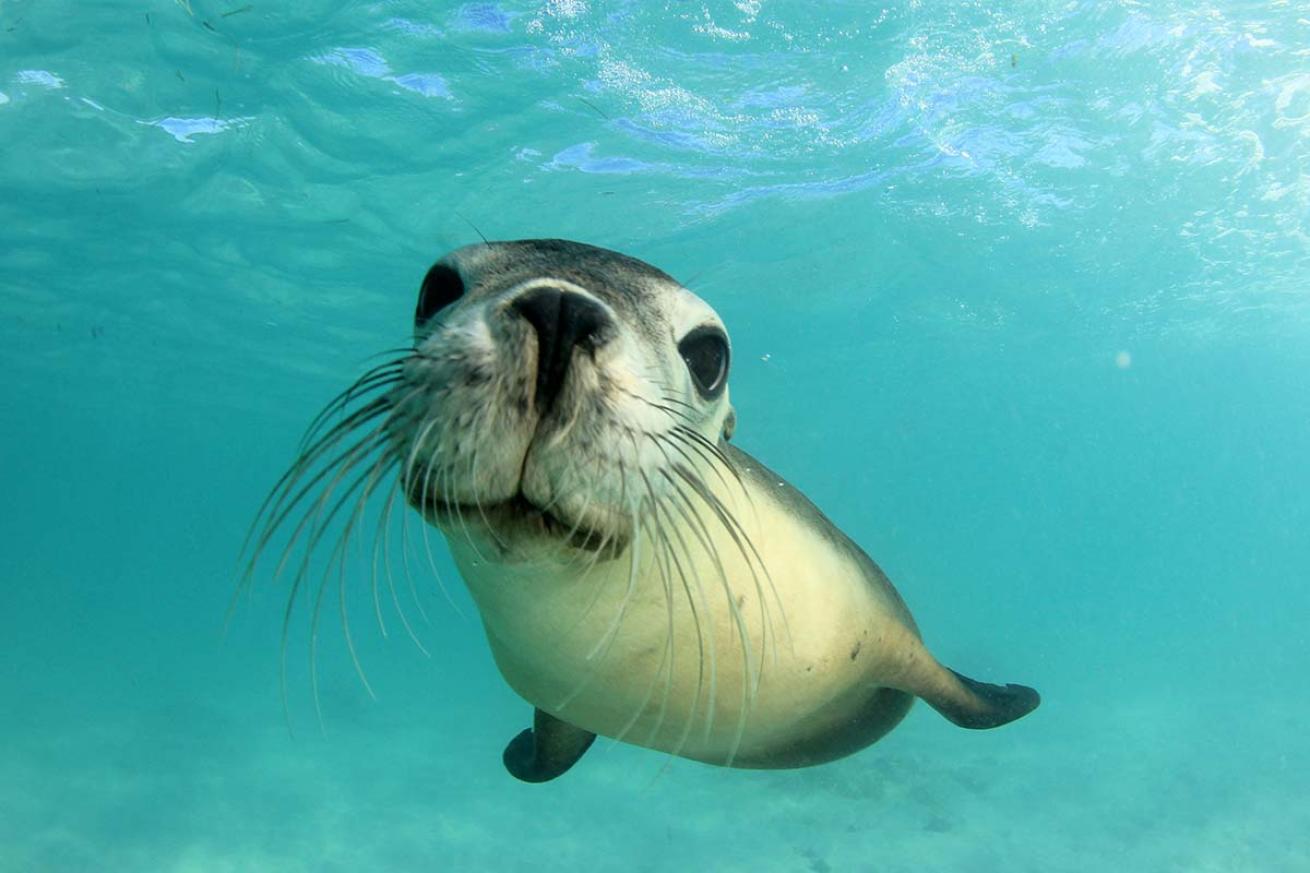Sea Lions Use Whiskers Like Humans Use Fingertips, Scientists Find

Shutterstock.com/Rich Carey"Not only are whiskers touch sensors, much like our fingertips, but the specific movement strategies... are also the same that humans make with our fingertips," says study coauthor Robyn Grant.
Scientists have known that mammals move their whiskers on purpose for sensory purposes, but by observing the behavior of a California sea lion named Lo, a team of researchers recently discovered at least one mammal species uses its whiskers like humans use their fingertips.
Humans use their fingertips and sea lions use their whiskers in “task-specific” ways, adjusting the specific way they’re moved depending on what they intend to discover about a particular object.
“Not only are whiskers touch sensors, much like our fingertips, but the specific movement strategies that we see Lo make with her whiskers are also the same that humans make with our fingertips, which is super interesting,” the study coauthor Robyn Grant, a senior lecturer at Manchester Metropolitan University, tells EcoWatch. “So they are probably common and important movement strategies for active touch sensing.”
Many mammals use their touch-sensitive whiskers to find food, help with navigation and get a feel for any objects around them. To test whether they may use them for more specific sensory observations, scientists decided to observe pinnipeds — a group that includes sea lions, seals and walruses — because of their thick, long, easily measurable whiskers.
“California sea lions (Zalophus californianus) make large, purposeful whisker movements and are capable of performing many whisker-related discrimination tasks,” the study says. “Therefore, California sea lions are an ideal species to explore the active nature of whisker touch sensing.”
The chosen sea lion, named Lo, was taught to perform three types of tasks: a texture-related task of identifying a certain fish-sized object; a size-related task of identifying a medium-sized fish; and a visual-related task of identifying a grey fish.
Scientists recorded Lo performing the tasks thousands of times, observing that she moved her whiskers differently depending on the task — and that she moved them in similar motions that we humans make with our fingertips when observing the size or texture of something.
“[S]he strokes her whiskers over an object's surface to feel texture and feels around the edges of an object to judge size,” Grant says.
In their footage, scientists also captured other California sea lions making similar movements, indicating the behavior might be common for the species.
“Being able to adopt different touch sensing movement strategies shows that mammals can precisely control their whiskers' movements and draw on their past experiences in order to pay attention to important aspects of an object – the edges of shapes and the surfaces of textures, for example,” Grant says. “This means that they have a high level of control over their sensory perception and is an excellent step in understanding more about mammalian sensing, perception and cognition.”
Scientists will continue this research to find out whether other mammals use their whiskers in a similar way. Studies are planned to observe mammals including harbor seals, South African fur seals, other pinnipeds, otters and foxes. Hopefully, they’ll all be as stellar subjects as Lo.
“Lo was an absolute dream to work with,” Grant says. “She seemed to really enjoy the study, and always worked really hard and professionally.”










